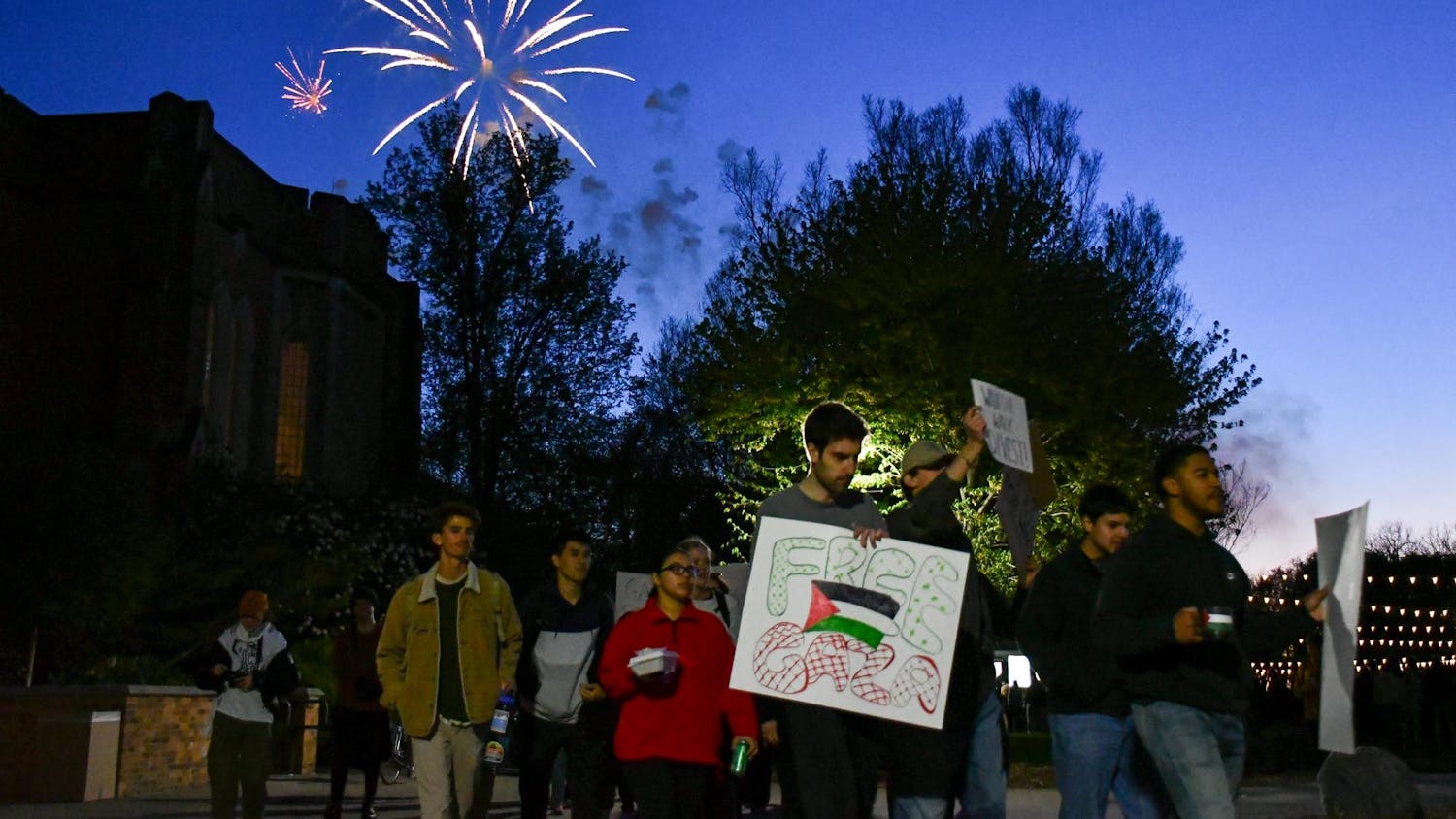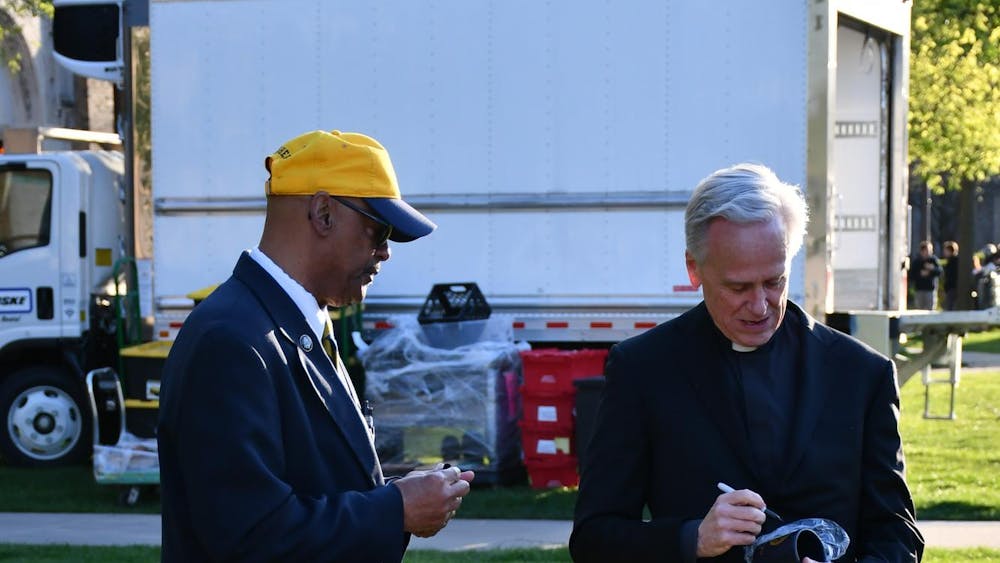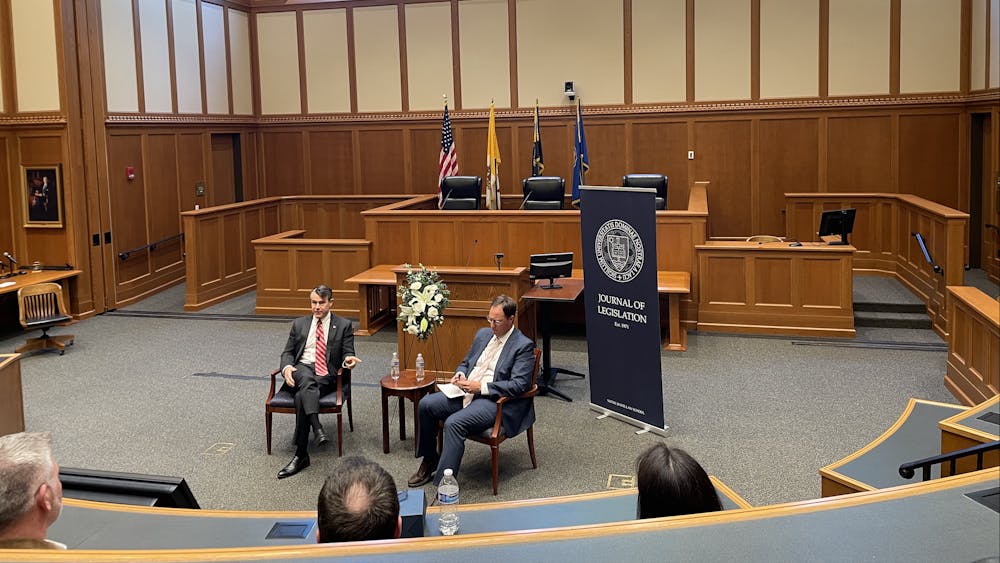In a lecture titled “Globalizing Ireland: Emigration and Immigration, 1980-2020,” sponsored by the Keough-Naughton Institute for Irish Studies, Mary P. Corcoran of Maynooth University discussed migration patterns in and out of Ireland over the last 40 years.
Corcoran began by talking about a Latvian foreman whom she met shortly after the European Union had undergone its first major enlargement into Eastern Europe in 2004.
Noting that these countries had just entered the European Union, and the associated free-travel area, Corcoran said the foreman “wanted to go to Germany, but Ireland was one of the only countries that would let him in.”
The influx of immigrants that included the foreman was tied to the so-called Celtic Tiger, an Irish economic boom that took place in the early 2000s, Corcoran said.
Corcoran also discussed Ireland’s 2015 referendum on the legalization of same-sex marriage, the first of its kind in the world.
“Thousands of Irish expats came home to participate,” she said, noting that many of these people wanted to be part of a momentous national decision.
“This ‘Home to Vote’ campaign was very significant,” she said. “People are still attached to Ireland.”
According to Corcoran, Irish migration patterns are defined by transnationalism, which means “living life in one setting, maintaining ties with another.”
Corcoran cited the example of the Home to Vote campaign as well as the Latvian foreman, who had an “hacienda” in Latvia and intended to return to his native country in the near future.
Looking through this “transnational lense,” Corcoran discussed the specifics of migration to and from Ireland.
“Over the past two centuries, Irish emigration has followed the ebbs and flows of the economy,” she said.
Corcoran noted that Ireland saw large-scale emigration after its economy collapsed after 2008.
“However, of the PIGS countries — Portugal, Ireland, Greece and Spain, the EU countries that melted down post-2008 — Ireland was the only one that saw large-scale emigration,” she said. “This was chalked up to the country’s link to Canada, the U.S. and Australia, but there is an interesting argument that has been made that Ireland is an emigrant culture.”
Most immigrants to and emigrants from Ireland, Corcoran said, are highly educated. She said 62 percent of recent emigrants and 57 percent of immigrants have at least a university degree.
Another group of emigrants is the so-called “Reserve Army,” Corcoran said. This group of emigrants’ actions are “dictated by economic circumstance,” she said.
“They have less choice, and recently they have probably mostly been made up by the 125,000 who lost construction jobs.”
The final group of emigrants is the “adventurers,” Corcoran said, many of whom come to America undocumented.
Many eventually return to their country of origin.
“For these people, emigration is a solution to boredom and a little bit of disaffection,” she said. "They often work below their qualifications,” said Corcoran. “Many eventually return to their country of origin.”
Corcoran said the “Reserve Army” most closely resembles past Irish immigration patterns.
“Many are there to provide for their families," she said. "Emigration was chosen for them. Their position is the most precarious.”
Corcoran cited the example of post-boom rise in unemployment, as immigrants were the hardest hit given the sectors that they worked in (namely construction).
Corcoran said that Ireland, for the most part, has a vibrant and thriving immigrant culture but admitted discrimination exists.
“If your ethnicity is visibly different, there is evidence of labor discrimination,” she said.













